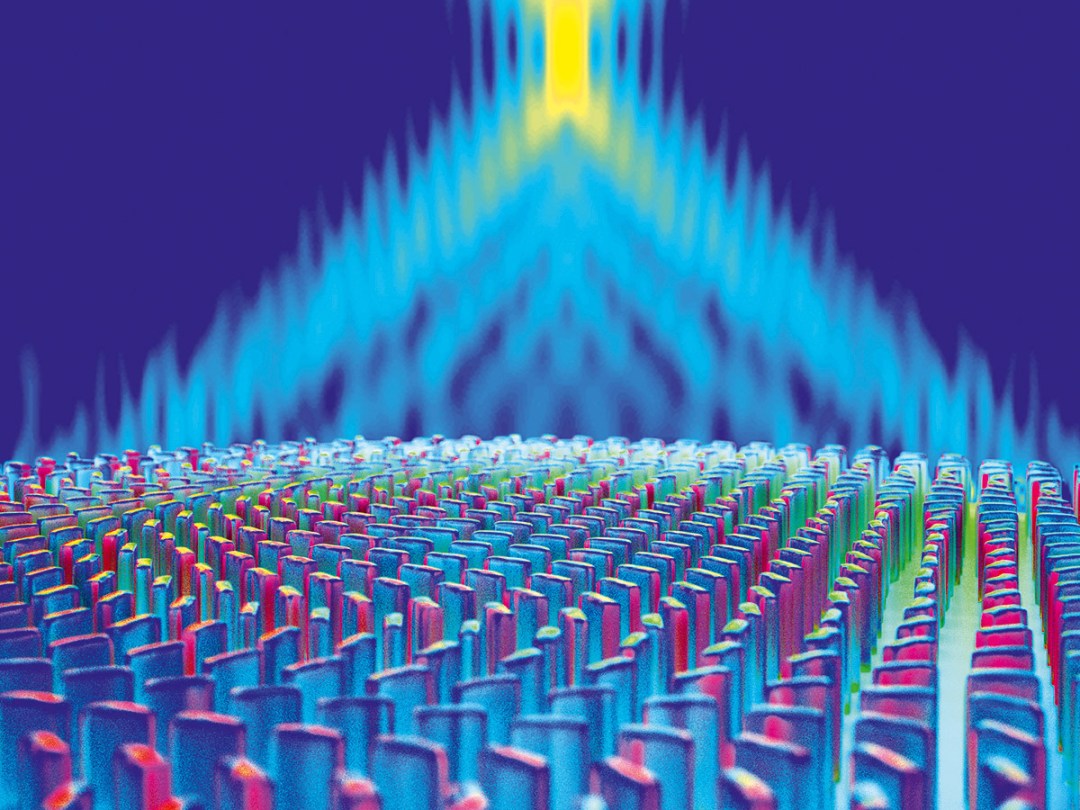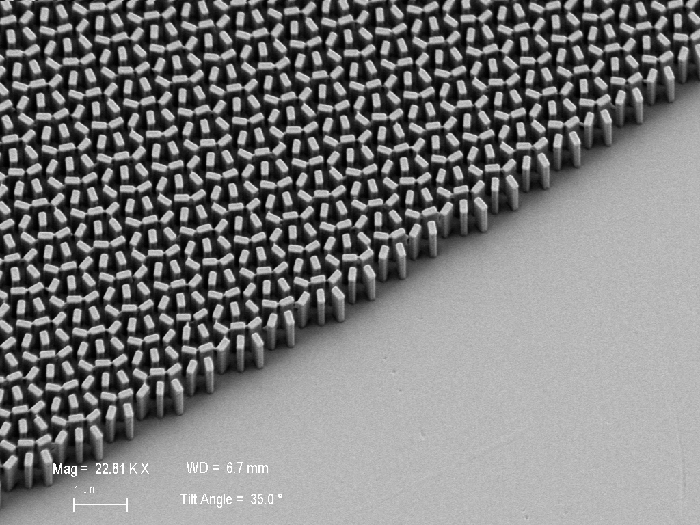Next Big Thing – camera lenses small enough to shrink your gadgets
If methods for focusing rays of light float your boat, you're in for a right treat

Is this the new Festival Vision Simulator 3000?
While this does looks like something you’d see after drinking a mushroom milkshake at #TranceFest2016, it is in fact a very close-up look at millions of precisely arranged titanium dioxide pillars, resting on a layer of transparent quartz that’s thinner than a human hair.
Obviously this explains nothing on its own, so please allow us to dazzle you with science. This intricate setup is, despite all appearances, the future of cameras.
In other words, what you’re looking at here, is going to replace the lens in your camera, smartphone and microscope, and it’s very clever indeed.

Titanium quartz what?
Right. So let’s start off with the regular lenses you’re already using. They’re curved pieces of glass which focus light onto a specific point, producing a sharp, detailed image. If you wear glasses, you’ll know exactly what we’re on about – light bends through the lens, focuses it on your retina – boom, perfect vision.
Instead of curved glass though, these new metalenses work by using the specific arrangement of these titanium dioxide pillars to focus different colours of light into a single point instead.
Hey presto – you’ve got a sharp, focused image, without a single piece of glass in sight.

Neat. Super neat. But… why?
Because size matters. This fancy metalens setup is far, far smaller than a traditional glass lens. Instead of a chunky piece of glass, you’ve now got a tiny, paper-thin disc no bigger than a piece of glitter confetti – wave goodbye to unsightly smartphone camera bulges for good.
The quality of the final image is also better than a traditional lens, and they can be churned out easily at existing processor factories.
It’ll be a while before they start appearing in your cameras and smartphones though, but hey, at least we’ve got something to look forward to.



